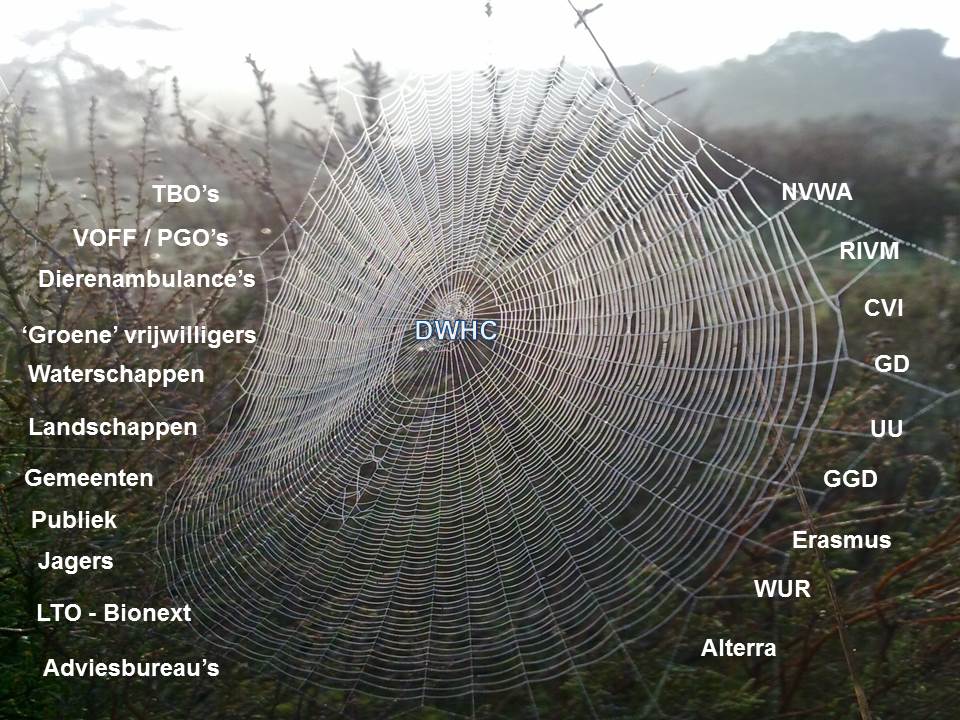

The DWHC is a hub for questions or concerns related to wildlife health, research and monitoring activities and an important link in the OneHealth approach to animal disease.
In order to function in this way the DWHC depends on a supply of wildlife cadavers from a network of people working in the field. Research findings are translated into relevant advice and used to increase awareness of the importance of wildlife health in relation to animal and public health.
The network consists of people in the field finding and submitting wildlife cadavers, research collaborators and funders as well as stakeholder groups who access and share the findings.

Figure 1: Some examples of organisations submitting dead wildlife (left) and research collaborators (right).
Some examples of groups and organisations that access and apply DHWC findings:
The National Institute for Public Health and the Environment (RIVM, Bilthoven), Central Veterinary Institute (CVI, Lelystad), Animal Health Institute (GD, Deventer), and Wageningen University and Research Institute (WUR, Wageningen) are partners of the DWHC. The collaboration with the RIVM focuses on the pathogens that can infect wildlife and potentially cause disease in humans including hantavirus and Echinococcus (fox tapeworm). The CVI is involved in research into the occurrence and prevalence of notifiable diseases in wildlife such as classic swine fever and avian influenza; additionally it is a reference laboratory for tularemia. DWHC projects with the GD focus on monitoring wildlife disease status in regard to conditions that pose a risk to livestock including foot and mouth disease and swine vesicular disease.